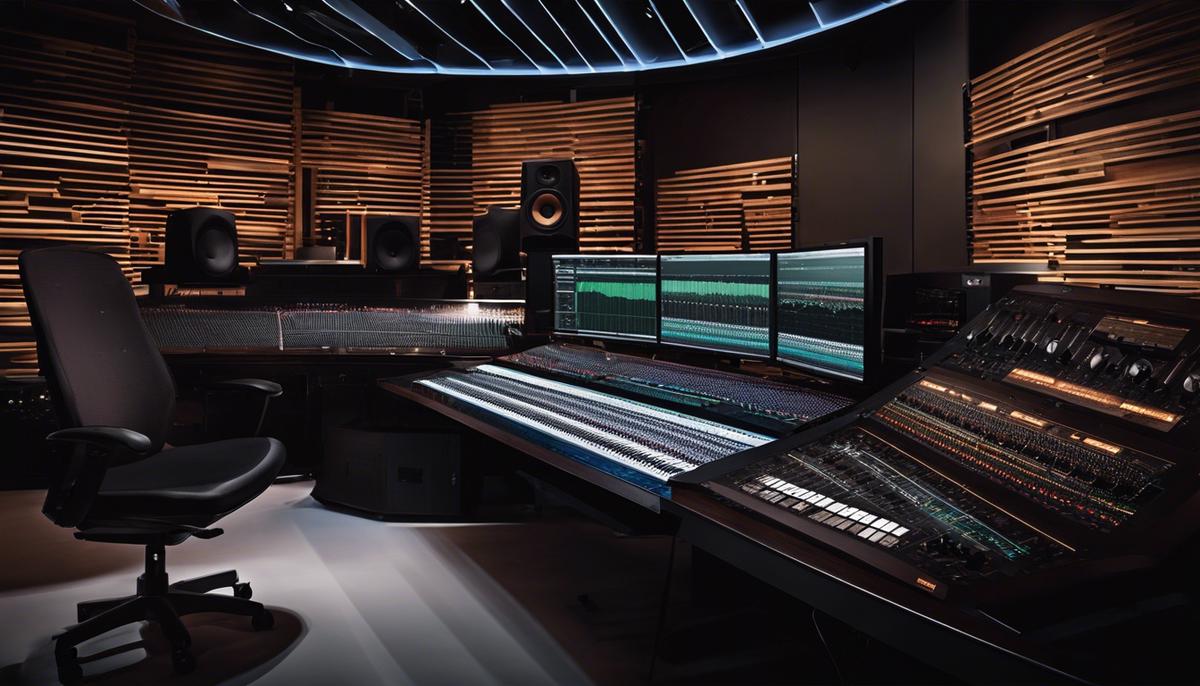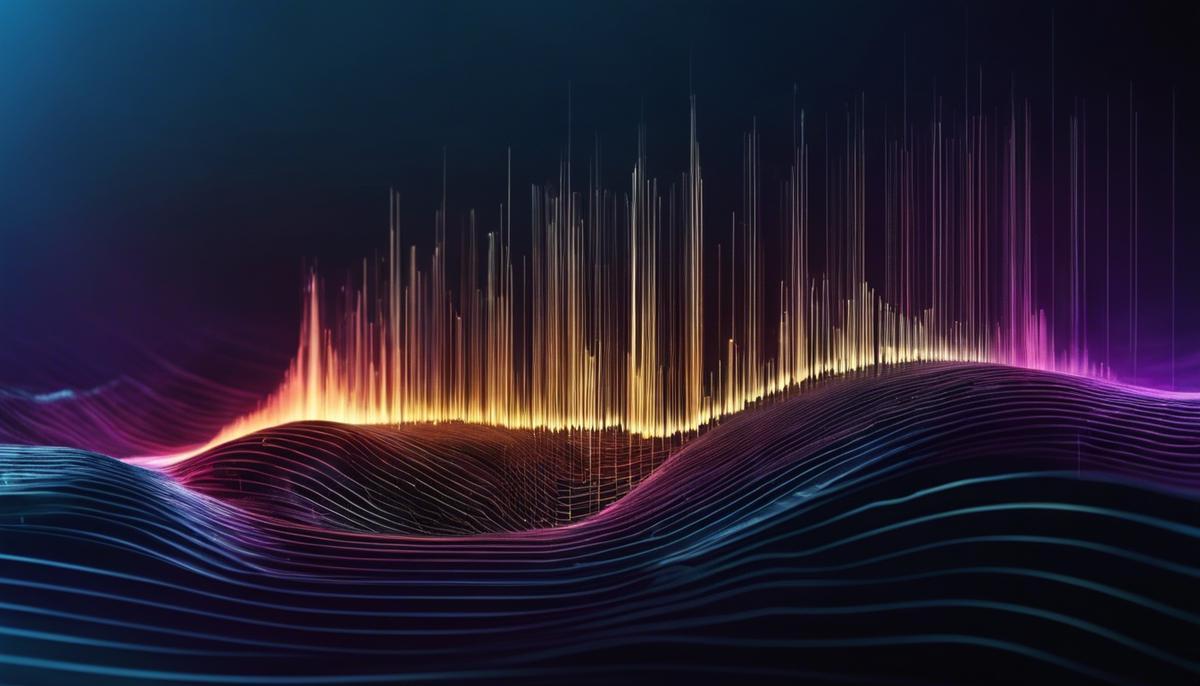In the intricate world of sound recording, every beep, buzz, or murmur can become a ruthless saboteur, seeping into your track and diluting the auditory experience. Untamed, ambient noise acts as a silent intruder, subtly pervading your recordings, often unnoticed by the untrained ear. Therefore, understanding and managing ambient noise becomes of paramount importance for any recording enthusiast. Starting from unraveling the nature of ambient noise, scrutinizing the acoustics of your recording space, exploring effective prevention techniques, to mastering post-production noise removal, this journey crisscrosses the myriad faces of sound pollution in recording sessions. Using a blend of knowledge, technique, and technology, learn how to transform noise from foe to friend, steering it from an unwanted intruder to a skilled collaborator in your quest for auditory perfection.
Understanding Ambient Noise in Recording Sessions
Unveiling Ambient Noise: The Ubiquitous Mournful Melody Influencing Music Recordings
Regardless of the genre – rock, classical, jazz, folk, or electronic – there’s a silent player subtly shaping the sound in every music recording. Not entirely soundless, rather this force contributes and intensifies the result. This enigmatic maestro? None other than ambient noise.
What is Ambient Noise Anyway?
In the lexicon of sound engineers, musicians, and audiophiles, ambient noise refers to any background sound like whispering wind, rustling leaves, car engines, distant sirens or an exhalation in a room. It’s the natural symphony of life playing a quiescent soundtrack to our existence. So intertwined is ambient noise with our daily routine, we often overlook its presence unless it’s pointed out or incredibly loud.
Every location has its tone and resonance shrouded in what professionals term a “noise floor”. Picture this: walking into an empty room and audibly discerning an ’emptiness’. Similarly, certain audible characteristics define a forest, subway, or jazz café, predominantly defining the noise floor.
When Ambient Noise Interrupts the Musical Flow
The role of ambient noise in recording music is a double-edged sword. On one hand, it enhances authenticity, painting vivid audio images in the listener’s mind. Consider the sound of rain in the background of an introspective ballad, providing an additional layer of melancholy.
However, the edge of the blade cuts the other way too. Too much ambient noise can be as intrusive as a discordant note during a symphony. The hum of an air conditioner, pesky noise leaks from the street, even the silent audibility of electronic equipments can tarnish the pristine quality of recording. It’s like inviting an unwanted noise band to every recording session!
Navigating the Sonic Landscape: Unplanned vs Purposed Ambient Noise
At times, ambient noise worms its way unplanned into recordings. During live recordings or in non-professional studios, natural environmental sounds seep into the music. These bits of reality can unintentionally augment the listening experience, adding a raw and genuine touch.
On the flip side, many artists and producers deliberately include ambient noise, using it as another instrument to complement their sonic palette. These purposive noise inclusions can help situate the music in a particular space or time, infusing it with emotional resonance that goes beyond melody and lyrics.
The Balance of Silence and Sound
Dealing with ambient noise is a delicate balance requiring astute judgment. Its unchecked presence poses a threat to sound clarity, yet its calculated use can add depth and dimension. The choice to include or exclude such noise falls squarely on the music creator’s shoulders, tethered to their artistic goal for the soundtrack.
Thus, the essence of this uninvited composer called ambient noise lies in its wielder’s hands. Will it be a silent wrecker of purity, or a stealthy enhancer of auditory moods? When carefully mastered, the invisible brushstrokes of ambient noise can reflect an audioscape that’s as complex, beautiful, and nuanced as life itself. Echoing the belief, music isn’t just about playing the right notes – it’s about capturing the silences between them too.

Assessing the Ambience: Acoustic Preparation of Recording Spaces
In the harmonious universe of music production, every note, every beat, every silence holds a significant weight of brilliance or bane. As we delve boldly into the intricate pattern of fabricating musical symmetry, it reflects the essence of an often misunderstood aspect – the acoustic preparation of a recording space for minimizing ambient noise. Through this lens, voyaging past the realms of conventional musical dialogue, we carve a new path, breathing life into a dimension where sound and silence merge seamlessly.
Positioned on the crossroads of art and technique, acoustic treatment allows producers to grasp the reins of sound and steer it away from unwanted noise. The essential first step takes us into a structured labyrinth where the surface materials play a key role. Centered on the principle of absorption, these materials capture and dissipate sound waves, acting as vigilant sentinels against disruptive reflections. Soft, porous materials aid this process, muffling incidents of unpredictable echoes. Carpeting the walls is a common scene in the hallowed ground of recording studios, the fibers woven together to tame the wild traces of noise pollution.
Beyond surface properties, there’s the architectural realm where design elements are integral to achieving desired acoustic soundscapes. Room shape and dimensions are instrumental in mapping the journey of sound, keeping destructive interference at bay. Irregular room shapes, and using diffusers, scatter sound waves, thereby nurturing a homogeneous sound field, free from the clutches of concentrated reflections.
However, even within carefully crafted spaces, noises hiding in plain sight often find ways to intrude upon the musical solitude. Machine hums, traffic roars, nature’s whispers – all bring potential disruptions. This is where Isolation steps into the spotlight. It refers to measures that prevent external noise from infiltrating the inner sanctum of the recording room, acting as the final fortress barring the path of unwelcome sounds.
Therein lies the art of Floatation, a method wherein rooms are built within rooms, a nesting construct effectively dampening vibrations from outside. Reinforced walls, suspended ceilings, and raised floors grant sanctuary, severing the ties with the chaotic external world. The same tactic extends to window fittings – double or triple-glazed windows act as silent guardians, deflecting unwelcome sonic intrusions.
Despite the meticulous measures, control rooms necessitate a special attention. As the nerve centre of the recording process, these spaces demand both silence for focus and optimal acoustic conditions for accurate sound interpretation. Here, techniques combine to deliver an equilibrium of diffusion and absorption, whisking away chances of node-based noise, whilst still ensuring a true reflection of sound in its raw purity.
Amidst the technical apparatus, it’s the delicate dance between silence and sound that weaves the lyrical narrative of superior music production. The process of acoustically preparing a recording space to minimize ambient noise is a profound symphony, marrying science with art, guiding each note, each silence towards the sweet allure of the perfect tune. This symphony reverberates within pristine spaces, silent witnesses to the musical gospels, echoing our love for the rich tapestry that is music.

Preventing and Reducing Noise: Techniques and Technologies
Seizing the Sound: Cutting-Edge Noise Reduction Techniques and Technologies
For centuries, music has coexisted with natural, ambient noise. Now, however, with rapidly evolving technologies, it’s possible to edge out this humdrum background companion. The world now stands in a place where acoustic mobilization pushes the boundaries, making music production acutely precise and crisp, pushing forward the boundaries of audio clarity.
First and foremost, let us delve into the sphere of Close-miking techniques. This strategy places the microphone incredibly close to the music source, resulting in a pinned down spotlight on the performers, reducing the picking up of peripheral noise. This technique even allows for each instrument to have its dedicated microphone, creating a commanding canvas of audio purity.
Propelling into the realm of time domain, Waveform editing, and noise gating technologies have emerged. Music aficionados’ hearts will pulse as waveform editing tools visualize sound waves, allowing producers to identify, isolate, and edit sections ridden with unwanted noise. Simultaneously, the noise gate comes to the rescue by automatically lessening lower volume sounds – such as background noise – considering them irrelevant, only allowing sounds above a certain threshold to be perceived.
Equalization, in terms of technology, is no less a marvel. The power bestowed upon music creators to alter frequency response, to tweak and tune the tonal character and harmonics of each sound, can be likened to a master potter molding clay into breathtaking art.
Noise Reduction software, these digital marvels, deploy algorithmic ingenuity as they intelligently identify recurrent elements in a sample, label them as noise, and then proceed to eradicate them from the recording. This technique is usually applied in post-production, adding another strong layer of defense against any unexpected interlopers of sound.
While reveling in technology-centric techniques, let us not forget the immense role of Microphone Polar Patterns. Depending on the shape and direction of the sound a microphone is designed to pick up, rest assured there exists a pattern for every situation; a heart skipping beat for every musical enthusiast.
Coming back full circle to the harmony between technology and aesthetics, we find Soundproofing. Music aficionados would be well aware of how a recording studio’s architecture, the materials used, and the overall design can reduce ambient noise drastically. Sabine’s law may seem a mere formula to the untrained eye, but it whispers tales of impactful reverberation, linking the room size, absorption of sound by surfaces, and the resulting reverberation time.
As we orchestrate around noise reduction methods and marvel at these innovative technologies, it is equally vital to remember that perfection is the symphony of meticulously crafted sound layered with the right touch of silence. As profound lovers of music, we must be aware that eliminating all ambient noise may leave an eerily perfect sound, alien to our naturally imperfect ears. As ironically as it may seem, absolute silence can sometimes be just as disturbing as ambient noise.
The landscape of audio recording and creation is a constantly evolving soundscape, a subtle interplay between harmonious instrumentals and underlying silence. Music, in its purest form, is a captivating narrative, woven around the symphony of silence, and embedded within this, is the radiant beauty of noise reduction in audio recordings. The journey of exploring and harnessing these audio techniques can only be likened to composing a melody itself; one must experience it to be truly entranced by its magic.

Mastering the Mix: Post-production Noise Reduction
As we delve deeper into the mystical realm of music creation, we find ourselves navigating the compelling currents of post-production. At this juncture of the process, the music, untouched and raw, shrieks out for refinement; it yearns to step out of its chrysalis and unfurl its wings in a burst of sonic color. And one of the challenges awaiting it? The intriguing, often daunting task of handling ambient noise.
So, what exactly happens after the recording? What metamorphosis occurs in that bridge between the artist’s soul and the listener’s ears? One might imagine the sound treks through a digital landscape, getting scrubbed, pruned, filtered, and polished. And there’s an intricate dance occurring – a dance between the myriad methods of reducing, masking, or embracing ambient noise.
Sometimes, noise reduction can be as simple as the good old-fashioned rerecording. Errors often make their initial appearance during this phase. A creaking chair, a jangle of bracelets, even an unexpected intake of breath can disrupt the musical flow. Rerecording allows for these little mishaps to be ironed out, making it a technique that is as timeless as music itself.
Enter the modern era, and cutting-edge digital software steps up to the challenge. Izotope’s RX, for instance, is like a surgeon’s scalpel, allowing for the precise excision of unwanted noise. Algorithms meticulously analyze every sliver of the soundwave, identify inconsistencies, and delicately wipe them away, leaving an untouched unity of music behind.
Equalization too, plays a vital role in this auditory ballet. By skillfully adjusting the frequency response of an audio system, it becomes possible to elevate desired sounds and suppress the undesirable ones. It’s akin to sculpting the raw clay of sound into an artistic expression, one that resonates with the listeners’ senses and emotions.
Then there’s the creative approach to ambient noise through sound design. With an artistic flourish, some ambient noise can be transformed into a part of the composition itself. It’s a nod to the artistry of imperfection, a step towards the raw and the real – for isn’t music, ultimately, exploration and discovery of our truths weaved in rhythms and melodies?
Finally, the role of mixing and mastering – the final touches that take the piece from just a recording to a masterpiece ready to be released into the world. It’s here that the balance between the fleeting silence and the pulsating sound is adjusted and perfected, the tonal character sculpted, the breadth and depth of the sonic stage defined.
This is the point when the music is prepared to step out into the realm of listeners, ready to connect, to resonate, and to stir souls. And in the heart of this process, ambient noise – once just an unwelcome intruder – can find a place. Either silenced by technology, masked by equalization, or embraced in the mix, it becomes an integral part of the symphony that is music creation. It’s a testament to the countless intricate factors involved in the journey from silence to sound, and an ode to the relentless human passion for music. For as long as there’s a beat to follow, a melody to hum along with, or a rhythm to sway to, there will always be a song to be sung, a story to be told. And perhaps, some ambient noise to be shaped.

Crafting a perfect recording isn’t just about the notes, the beats, or the rhythm. It’s about the calculated silence between those beats, the intended breaks, and the masterfully managed absence of needless noise. Equipped with the right techniques and understanding, you’re now ready to combat ambient noise, utilizing and transforming it instead of simply succumbing to it. Becoming aware of the devil in the details is the first step, adequately preparing your recording spaces, the next. Practiced noise reduction allows you to command the silence in your sessions, ensuring that your recordings are crystal clear, untouched by the uncontrollable variables of the environment. And finally, mastering the art of post-production noise reduction leads to an immaculate product, every unwanted sound skillfully eliminated. Take hold of the reins of your auditory craft, and let the silent saboteur be a challenge to surpass, not barricade to your dreams.

Comments.
Currently there are no comments related to this article. You have a special honor to be the first commenter. Thanks!